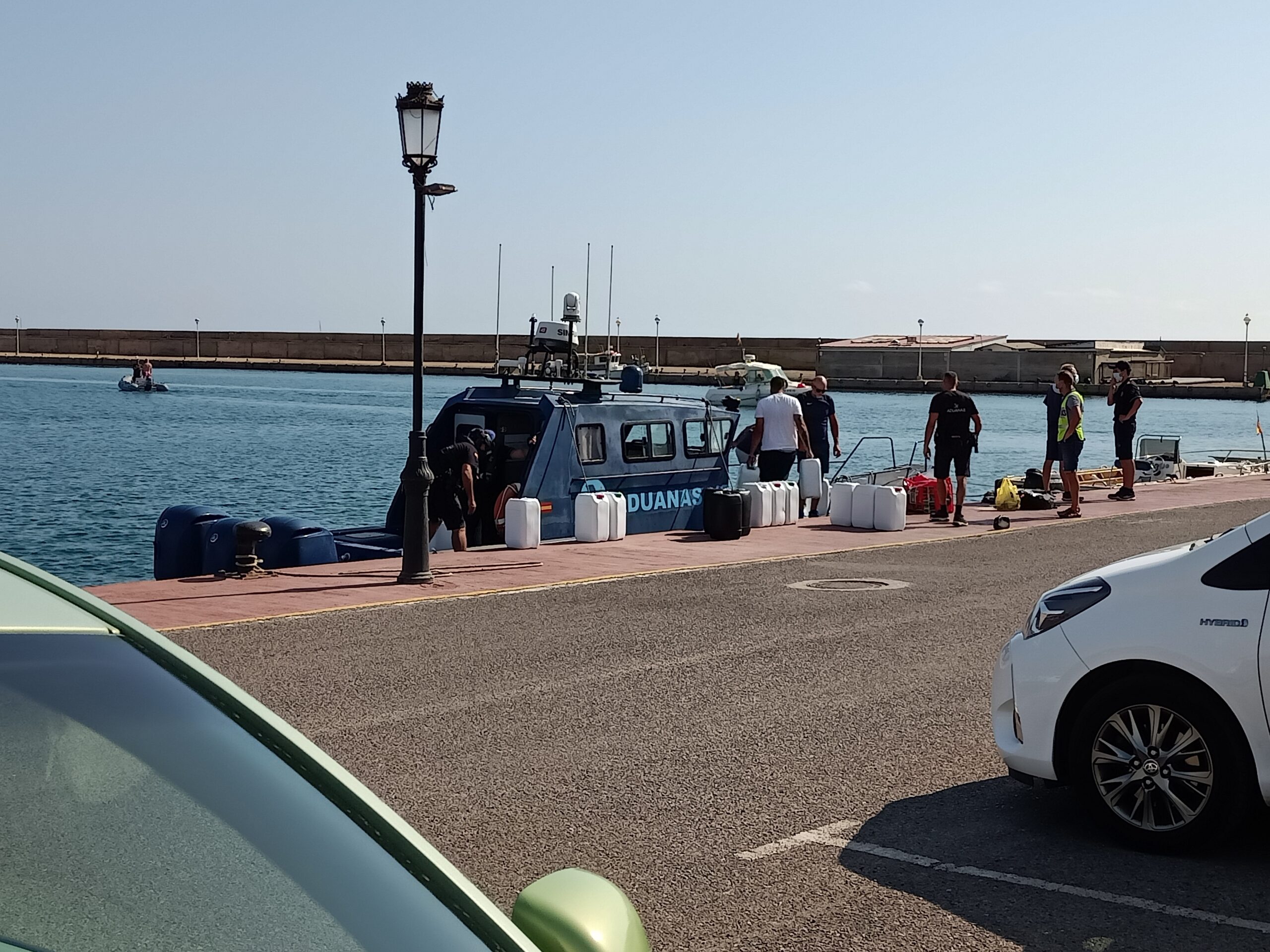
We set off early and are soon in Almerimar, a nest off the coastline (in the positive sense). Actually, we are only here to refuel and to stretch our feet, but then something very strange happens: we experience at first hand how the Spanish customs authorities bring up two smugglers’ boats at sea, force the gang into the harbour, interrogate the four suspects, and transfer the cargo, consisting of countless canisters – what might be in there? – to preserve the evidence. All this goes over very routinely. Exciting.
Then we decide to stay here a little longer; it is invitingly beautiful and we go swimming, have a fine meal, go for a walk… The sun is burning down, we are soon exhausted.
In the late afternoon we continue to Garrucha. We don’t think much about it, moor up, sleep, and want to continue the next morning. The harbour and the harbour staff are somehow ‘weird’; we can’t relate, so out we go, despite the strong surf. But what a surprise: the waves are so massive that it almost leaves us speechless. I try to pull us over the surf waves near the shore to (hopefully) get into calmer waters further out, but nothing there. Again and again Martina takes my left arm with her right hand, which I use to hold the wheel (I slow down or increase my speed on the right, depending on the situation), which distracts me, really disturbs me, and I get loud. – It’s obvious that she’s not comfortable anymore. Neither am I, if I’m honest – I wanted to get us out ‘confidently’, and appear relaxed despite inner tension. I guess I didn’t succeed. It’s delicate to critical what we’re doing. So go back!
But turning back is not so easy, because I have to catch one of the countless wave crests so that it doesn’t tip us over during the manoeuvre! Every turn needs space, but the wave crests don’t just stop, they come roaring in again and again. But slowing down is not so smart either, because then we drift with the waves, and thus give up control… Not good.
Somehow I manage to turn the corner and do exactly what I have learned from the many videos of Australian coastal rescue services that I have watched on YouTube: mount a wave from behind and adjust the speed so that I ride with or on a wave (behind its crest) until we come back to the harbour entrance. Don’t be too fast, or we’ll tip forward, over the crest and into the depths, but don’t be too slow either, so that the following wave doesn’t roll over us. Keeping our balance? – Yes, we’re succeeding!
So the attempt to ‘break out’ in this high swell has failed. But at the same time I realise that I have a once-in-a-lifetime chance to face this challenge again and practise under extreme conditions (but in warmth and sunshine). – In the calm waters of the harbour, I tell Martina that I want to go out again to ‘practice’ and ask her if she’ll come along. She is in! So we agree: she is to keep her hands on the handles so that I can steer and give or take away throttle without obstruction. At the same time I feel how her energy does me good and how she supports me with it. So off we go!
We curve through the wave crests outside, turn, cross, overcome the crests at different angles and I notice how my shoulders relax. It’s going, coming to grips with these waves better and better – not in order to reach the next place (apparently the whole coastline is littered with these waves coming from the east), but to complete a lesson here that I would otherwise have avoided and never learned.
Inevitably, the trip from Marahamn near Nyborg (Sweden) to Marjaniemi on Hailuoto (Finland) comes to mind, where I almost wet my trousers for over an hour and a half in a similar situation. These waves here in Spain are higher, but firstly I am already a bit more experienced, and secondly I am no longer on my own. I feel the support of Martina, which I don’t question, but simply accept.
Back in the harbour, we are already expected; people have been watching us and must have been scratching their heads wondering what these northern Europeans are trying to do. (And it occurs to me that I didn’t even ask before leaving how the fishermen and harbour workers assess the wave situation…). – We moor again and decide to go to the next best hotel and hole up for the rest of the day (which is very, very good for us).
This experience has really brought us together. – In the middle of the night we go out again, eat our picnic dinner on the beach in the dark, fool around before returning to the hotel… and enjoy our breakfast very late the next day.